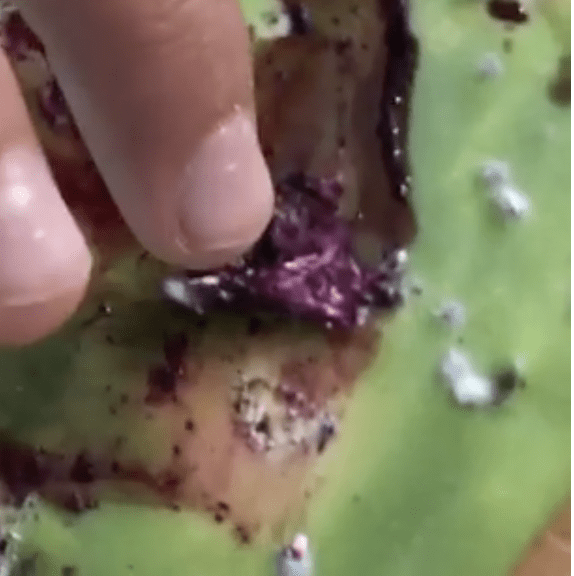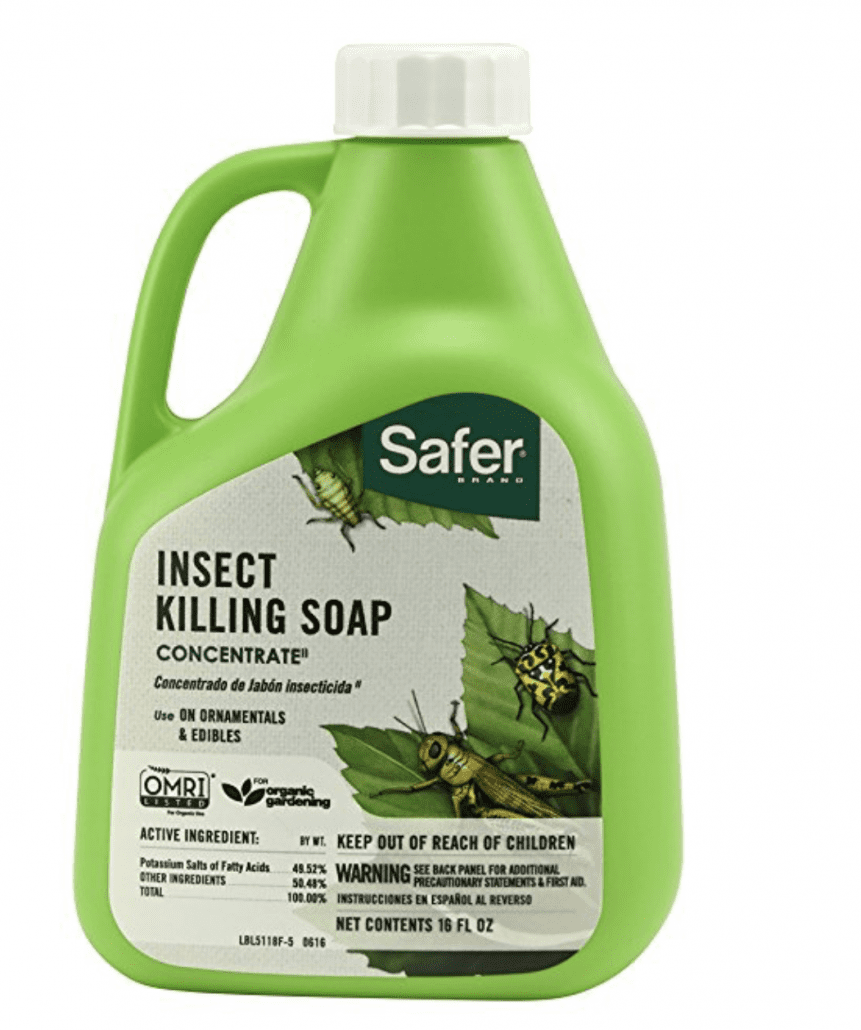
Cochineal Scale on Paddle Cactus, What To Do
White fuzzy lumps on paddle cactus indicate the presence of a parasite that pierces the plant's skin and consumes its juices. A bit of cochineal (coach-en-ee-al) scale is no big deal, but it does tend to spread and may eventually kill the plant.
Your first line of defense is to blast what appears to be bits of cotton with a hose to dislodge them. However, in crevices and where a hose can't reach, they'll proliferate. I take preventive action and scrub my paddle (opuntia) cacti at the first sign of infestation with insecticidal soap. I also remove any badly infested pads and those growing quite close to each other (slice them off at the joints).
Then I treat the plants with Safer insecticidal soap. So named because it's safe for the environment, it controls soft-bodied insects without harming plants like harsher soaps may. (Don't use dishwashing liquid on succulents.) I mix 4 or 5 tablespoons of concentrated Safer soap to a gallon of water, then dip a long-handled, soft-bristle brush into the solution and scrub the pads.

This removes the insects (which are not mealybugs, a common misconception), won't scratch the pads, and leaves a soapy residue that inhibits the pests' regeneration. I do this "as needed"---about every six weeks in the summer.

In my YouTube video, How to Treat Cochineal Scale, helper James squashes the bugs with his thumb.
Cochineal scale does have the odd benefit of entertaining garden visitors, especially kids. Squish a white lump and you'll get marvelously realistic "blood." (Use cold water to remove any stains on clothing.) Of course if the opuntia has spines---as most do---real blood also is a possibility. If so, simply use a stick to squash and smear the cottony bumps.

Insects nestled within the waxy white fuzz are rich in carminic acid, a red liquid that repels ants, birds and other predators. Used by ancient Aztecs to color woven fabric, cochineal scale was highly prized by Spanish conquistadors, who considered it second in value only to New World silver.

Cochineal insects under a microscope. Actual size: 0.2 inches (5 mm).
Because harvesting cochineal dye is labor intensive, it was replaced by synthetic dyes in the 1800s. But due to cancer-causing concerns, natural red dye is now back in favor with food and cosmetic manufacturers. Next time you pick up something that's edible, red and packaged, read the label. If ingredients list "carmine," "cochineal," "E 120," or "natural red 4," it's been colored---ironically, to make it more appealing---with insects.
Related info on this site:
Uh-oh, Is My Succulent Sick? Common pests, diseases and problems, plus solutions
Succulent Pests, Diseases and Problems Keep your succulents healthy, happy and looking their very best WEEVIL ALERT: The agave snout-nosed weevil is a major pest in ever-increasing numbers. Don’t wait for signs of infestation; take preventative measures NOW to protect your agaves, furcraeas, yuccas, beaucarneas and mangaves. Please don’t let your yard become a breeding ground for pests that move…
Succulent Pests and Problems Q&A Forum
Are pests or mysterious maladies causing problems with your succulents? This page is a forum for you to ask questions, leave comments and share what works for you. Others can see and benefit from the answers. Your own tried-and-true solutions are welcome, too!




Debra;
Is one able to use Dawn Dish Soap for this?
Hi Hawk — Although I haven’t tried Dawn for this application, I have used it on other succulents with disappointing results…it’s just too harsh. Better to err on the side of caution, methinks. Thanks for commenting!
is it safe to eat infected paddles fter they have been boiled & fried?
Hi Frank — Your premise is faulty. Infested pads tend to be older ones, which are woody and inedible.
How can I protect my prickly pear trees from the cochineal Bugs ?
Did you not find the info above helpful? Not sure what else I can tell you.
Hi Debra. Just to clarify, I should use a product like Safer soap in the summer, and Neem oil in the winter? I have used Neem oil on a few agave that had an infestation and it worked well, but that was not during these hot summer days. I am tempted to harvest some of the cochineal to try a bit of natural dyeing, but my main goal is to protect my opuntia–I love that plant!
Hi Shannon — I deleted the part about using Neem oil. I use only Safer soap, and haven’t had to treat the plants in the winter because the bug isn’t as active. Glad you asked!
We love to eat prickly pear fruits. This year white fungus has appeared (Cochineal). Our prickly pear plant does not have spines so I wash the fungus off the fruit and we peel and eat them. Is this okay to do? Or are we eating unseen eggs and insects?
We regularly clean the whole plant as you suggest in the video.
Hi Zara — I confess I’ve not eaten the fruit—birds get to them first—so my best suggestion is to inspect it as you would any fruit: Is something wiggling? Does the flesh have brown or soft spots? I’m no expert and hesitate to even hint that it’s OK to eat a fungus or bug, but my guess is even if you did ingest a few, they’d be harmless. Here’s a thought: If cochineal dye is used in lipstick and as a natural food coloring, it’s probably OK in its unprocessed state. Makes sense that the cosmetic or food industries would avoid using something that had come in contact with anything poisonous.